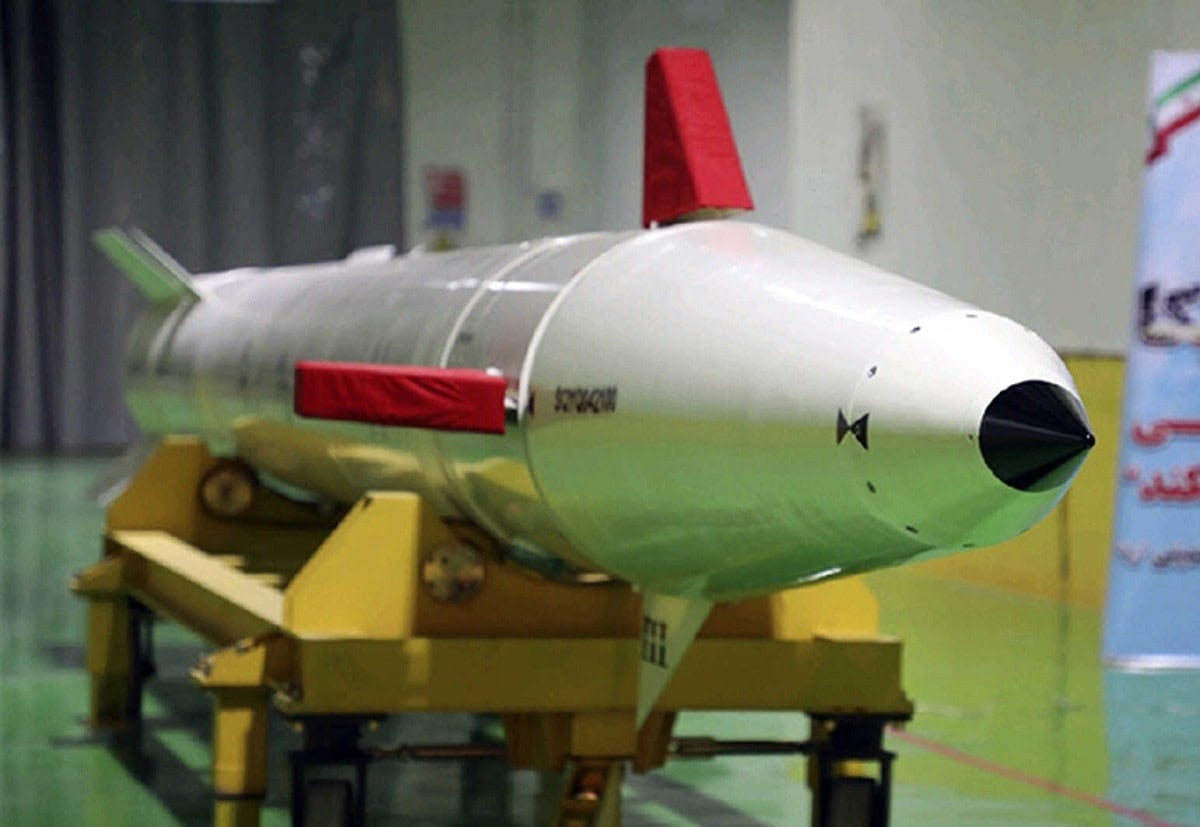Iran’s missile program remained untouched under the Joint Comprehensive Plan of Action (JCPOA), also known as the Iran nuclear deal. The Iranian missile program has been closely associated with North Korea since its acquisition of the North Korean Nodong missile in the 1990s. Decades later, its missiles pose a potent regional threat.
Indeed, the Iranians have one of the largest missile arsenals in the Middle East, and they have shared some of their missiles with proxies such as Hezbollah. The Houthis notably received a copy of the Kheibar Shekan solid-fueled ballistic missile, one of the newest in Iran’s arsenal.
“The most prominent weapons, either already extant or under development, include the liquid-fuel two-stage Simorgh missile, the liquid-fuel single-stage Khorramshahr-1 and -2 missiles (BM-25/Musudan), as well as the mid-range Shahab-3 ballistic missile, the mid-range Ghadr-110 ballistic missile, and the solid-fuel two-stage Sejjil ballistic missile. While estimates of the ranges of these missiles vary, each claims a range that allows for the targeting of neighboring countries,” Mohammad Abu Ghazleh, a senior researcher at TRENDS Research and Advisory in Abu Dhabi, wrote on the website of the Fikra Forum.
Iran’s missile program posed a serious threat to Saudi Arabia and the United Arab Emirates, at least until the signing of a Chinese-brokered agreement that restored diplomatic ties between Riyadh and Tehran.
Iran fired a barrage of 11 ballistic missiles against Iraq’s al-Asad Airbase housing U.S. troops in January 2020, in response to the killing of Quds Force Commander Qasem Soleimani. That event showed what a sustained attack by Iranian missiles could look like. Each missile carried a warhead weighing between 1,000 and 2,000 lbs. American soldiers manning guard towers were blown out of their posts, while others huddled in bunkers built during Saddam Hussein’s reign.
Iranian Missile Technology Progresses
According to the Foundation for the Defense of Democracies, Iran has carried out 228 ballistic missile tests from its territory since the Iran-Iraq War.
In recent years, Iran has tested its new Khorramshahr-4 and Khaybar missiles. The former is named for a village freed by Iran from Iraqi occupation during the Iran-Iraq War, and the Khaybar commemorates a battle between the Prophet Muhammad and the Jewish Quraysh tribe. The latter of course is a veiled threat against Israel.
The Khorramshahr-4 reportedly has a range of about 745 miles and can hit within 100 feet of its intended target. Its warhead reportedly can maneuver and modify its glide path outside of Earth’s atmosphere, and is invulnerable to electronic warfare countermeasures. The Khaybar missile can launch a 1,100-lb. warhead at a distance of 745 miles.
The Fattah system has an 845 mile range and can reach Israel from Iranian territory. Iran has dubbed the Fattah its first hypersonic missile, but that claim cannot be verified. Unlike other rockets used by Iran, this one uses solid fuel and requires less preparation to fire.
“Iran has proven it has the capability and intent to develop more precise, lethal and survivable projectiles — and that it has no plans to stop. The fact that Pyongyang claimed to have tested a hypersonic ballistic missile in 2021 also necessitates further concern and caution,” columnist Behnam Ben Taleblu wrote in July. “EU policymakers need to be engaging in conversations and sharing intelligence with their American and British counterparts to better align transatlantic Iran sanctions and prevent the collapse of U.N. restrictions on Iran this October. This can be done by invoking the Snapback mechanism at the U.N. Security Council, which would allow restrictions to be reimposed, and is only available for another two years.”
He continued, “However unsatisfying diplomatic and economic options against Iran’s ballistic missile program may seem, the failure to course-correct by restoring multilateral prohibitions and building on the existing sanctions architecture will signal that the West is genuinely afraid of taking any action.”
John Rossomando is a senior analyst for Defense Policy and served as Senior Analyst for Counterterrorism at The Investigative Project on Terrorism for eight years. His work has been featured in numerous publications such as The American Thinker, Daily Wire, Red Alert Politics, CNSNews.com, The Daily Caller, Human Events, Newsmax, The American Spectator, TownHall.com, and Crisis Magazine. He also served as senior managing editor of The Bulletin, a 100,000-circulation daily newspaper in Philadelphia, and received the Pennsylvania Associated Press Managing Editors first-place award in 2008 for his reporting.

